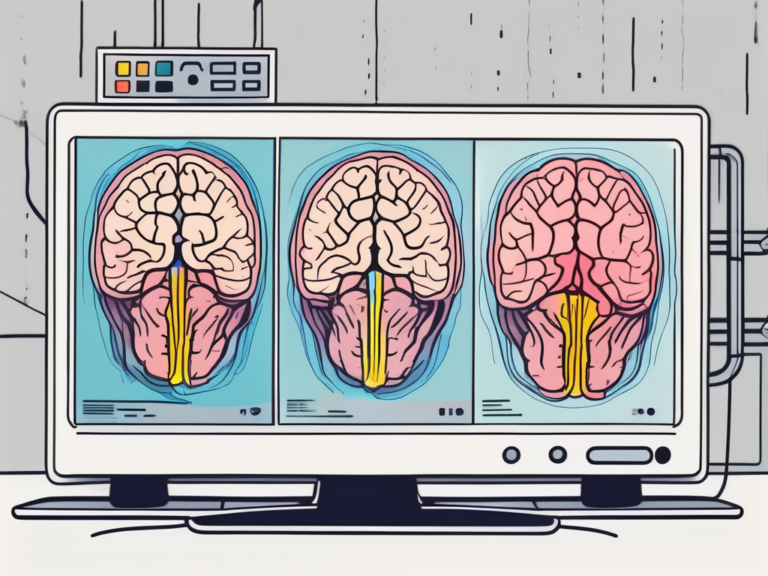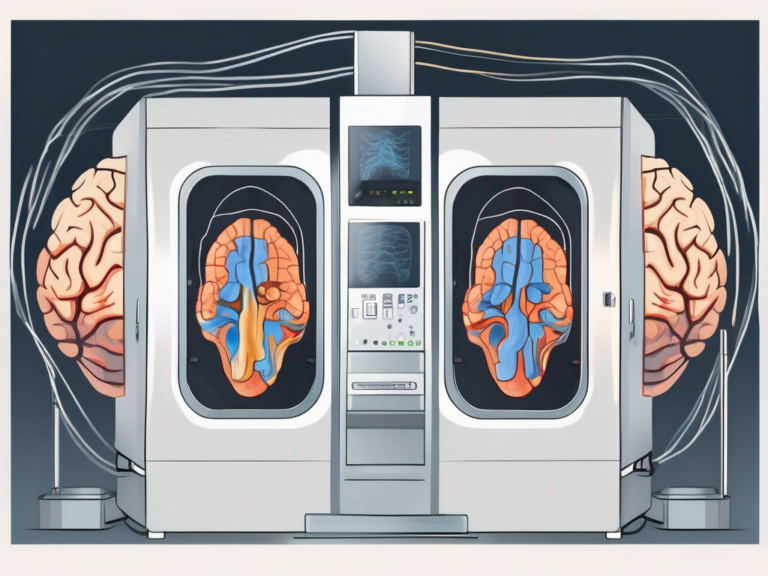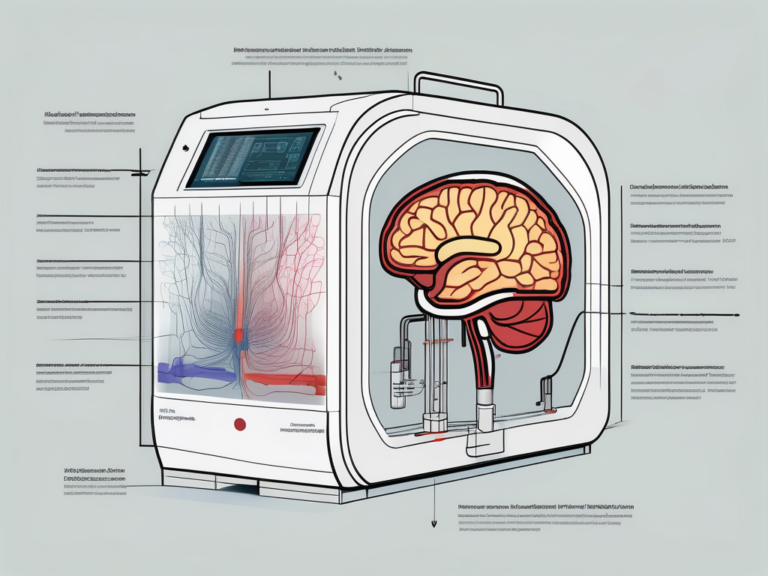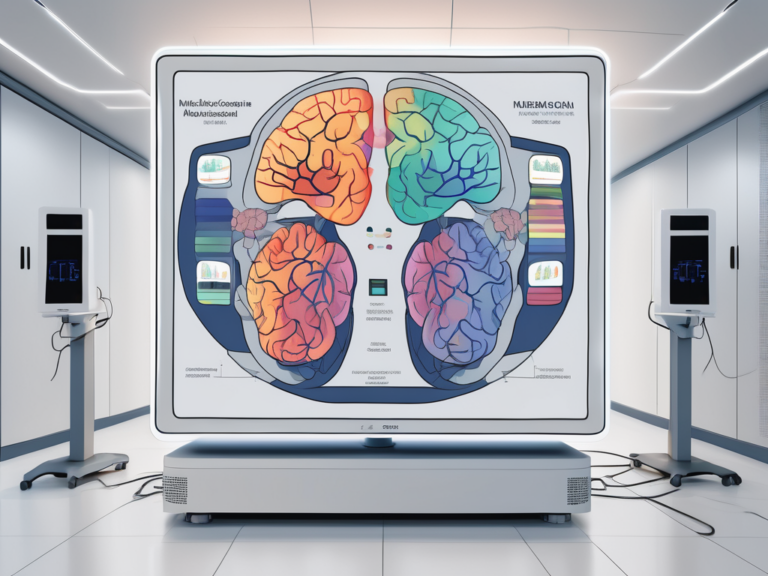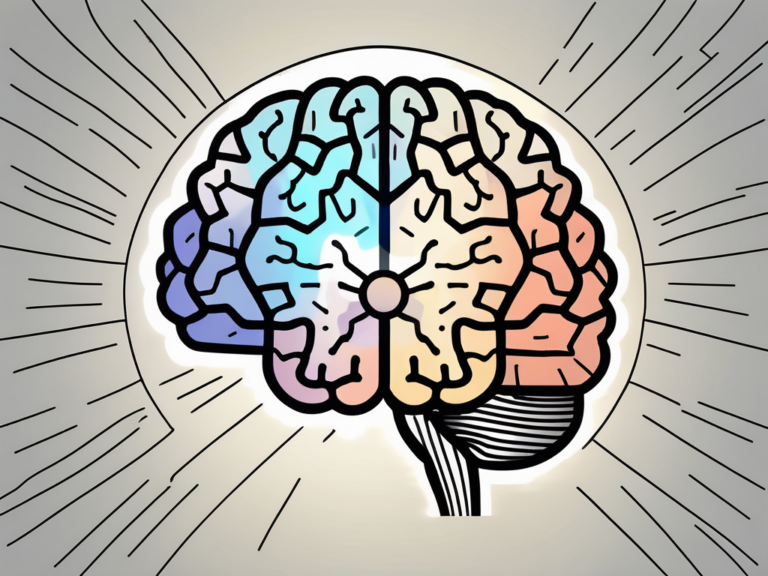when are fmri scans used
Functional Magnetic Resonance Imaging (fMRI) scans are invaluable tools in the field of medical imaging and neuroscience research. These scans enable scientists and healthcare professionals to study brain activity and understand various cognitive processes. In this article, we will explore the basics of fMRI scans, their purpose and applications, the process of getting an fMRI scan, interpreting the results, risks and considerations associated with these scans, and the exciting future developments in the field.
Understanding the Basics of fMRI Scans
Fundamentally, an fMRI scan is a non-invasive imaging technique that measures changes in blood flow and oxygenation in the brain. By detecting these changes, experts can map brain activity and identify specific regions associated with various cognitive functions. This information is crucial for diagnosing neurological disorders, understanding the impact of brain injuries, and studying human behavior.
Furthermore, fMRI scans have revolutionized the field of neuroscience by allowing researchers to observe the brain in action. The ability to track real-time changes in neural activity has provided invaluable insights into how different regions of the brain communicate and work together to produce complex behaviors and thoughts.
What is an fMRI Scan?
Functional Magnetic Resonance Imaging involves using powerful magnetic fields and radio waves to generate detailed images of the brain. Unlike traditional MRI scans that primarily capture anatomical information, fMRI scans provide insight into brain function. By highlighting areas of increased blood flow, fMRI scans indicate regions of neural activity.
Moreover, fMRI scans can be used to study a wide range of cognitive processes, such as memory, attention, language, and emotion. By analyzing the patterns of brain activity associated with these processes, researchers can gain a deeper understanding of how the brain functions under different conditions and in response to various stimuli.
The Science Behind fMRI Scans
When a particular brain region becomes active, blood flow to that area increases to provide the necessary oxygen and glucose. This increase in blood flow can be detected by fMRI scans using a technique called the blood oxygenation level-dependent (BOLD) signal. By mapping these changes, experts can determine which brain areas are involved in specific tasks or thought processes.
Furthermore, fMRI scans have been instrumental in advancing our knowledge of brain plasticity, the brain’s ability to reorganize itself by forming new neural connections. By studying changes in brain activity before and after interventions such as therapy or learning new skills, researchers can observe how the brain adapts and rewires itself in response to external stimuli.
The Purpose and Applications of fMRI Scans
FMRI scans have extensive applications in medicine, psychology, and neuroscience. By understanding when and how to utilize fMRI scans, healthcare professionals can make informed decisions regarding patient care and treatment plans.
Functional Magnetic Resonance Imaging (fMRI) is a non-invasive imaging technique that measures brain activity by detecting changes in blood flow. This technology has revolutionized the field of neuroscience by allowing researchers to observe brain function in real-time, providing valuable insights into cognitive processes and behavior.
Medical Uses of fMRI Scans
Focusing on medical applications, fMRI scans are crucial in diagnosing and monitoring various neurological conditions. These scans aid in the localization of brain tumors, assessing the impact of strokes, and identifying abnormalities associated with epilepsy. Additionally, fMRI scans play a vital role in pre-surgical planning for conditions such as brain aneurysms, arteriovenous malformations, and lesions.
Furthermore, fMRI is instrumental in evaluating the effectiveness of treatments for neurological disorders. By tracking changes in brain activity before and after interventions, healthcare providers can tailor therapies to individual patients, maximizing outcomes and improving quality of life.
Psychological and Neurological Applications
Beyond medical purposes, fMRI scans provide valuable insights into the human mind and behavior. These scans assist researchers in studying conditions such as depression, addiction, obsessive-compulsive disorder, and schizophrenia. By examining brain activity during specific cognitive tasks or emotional states, experts can uncover underlying mechanisms and develop targeted interventions.
Moreover, fMRI studies have contributed to our understanding of brain plasticity, the brain’s ability to reorganize and adapt in response to experiences. This phenomenon is crucial in rehabilitation settings, where fMRI scans can track neural changes following injuries such as traumatic brain injuries or strokes, guiding personalized recovery plans for patients.
The Process of Getting an fMRI Scan
Before undergoing an fMRI scan, certain preparations and precautions are necessary to ensure accurate and reliable results while ensuring the safety of the patient. It is essential for patients to understand the significance of these steps to guarantee the success of the procedure.
One crucial aspect of preparing for an fMRI scan is the screening process. Patients are required to provide detailed information about any metal implants or devices in their bodies, as these can pose serious risks in the strong magnetic field of the scanner. Additionally, individuals with certain medical conditions or metal fragments lodged in their bodies may not be suitable candidates for an fMRI scan, highlighting the importance of thorough screening procedures.
Preparing for an fMRI Scan
Prior to the scan, patients must remove any metal objects, such as jewelry, that could interfere with the magnetic field. They are positioned comfortably in the scanner, and special care is taken to reduce any anxiety or claustrophobia they may experience. Additionally, patients must remain as still as possible during the scan to avoid artifacts that can affect the image quality.
Furthermore, a crucial step in the preparation process is the use of a contrast agent. In some cases, patients may be required to receive an injection of a contrast dye to enhance the visibility of certain tissues or blood vessels during the scan. This dye helps radiologists and healthcare providers to obtain clearer images for a more accurate diagnosis.
What to Expect During the Scan
Once inside the fMRI machine, patients will hear loud knocking and buzzing noises. These sounds are a result of the magnetic field and radio waves being used to capture the images. To mitigate discomfort, patients are often provided with earplugs or headphones playing music or soothing sounds. The duration of the scan varies, lasting anywhere from 30 minutes to over an hour, depending on the specific requirements of the study or examination.
Moreover, during the scan, patients are required to perform certain tasks or respond to stimuli to activate specific areas of the brain. This active participation is crucial in functional MRI studies, where researchers aim to observe brain activity in real-time. Patients may be asked to solve puzzles, identify images, or perform memory tasks while the fMRI machine captures their brain’s responses, providing valuable insights into cognitive functions.
Interpreting fMRI Scan Results
Understanding how fMRI scans are read is essential in extracting meaningful conclusions and generating accurate diagnoses. Experts trained in neuroimaging analysis perform careful assessments to interpret the wealth of data obtained from these scans.
When delving into the intricacies of fMRI scan interpretation, it is important to recognize the complexity of the human brain and its responses. The data extracted from fMRI scans provide a glimpse into the dynamic neural processes that underlie various cognitive functions. By scrutinizing these scans, researchers can uncover valuable insights into how different regions of the brain interact and contribute to overall brain function.
How fMRI Scans are Read
During the analysis process, significant attention is given to identifying regions of increased activation. These regions are then associated with specific cognitive tasks or experimental conditions to determine functional connectivity patterns. By comparing fMRI results across multiple individuals or study conditions, scientists can draw meaningful conclusions regarding brain function and its relation to cognition.
Moreover, the interpretation of fMRI scans goes beyond merely pinpointing activated brain regions. Researchers also explore the temporal dynamics of neural activity, examining how brain networks evolve over time in response to different stimuli. This temporal dimension adds another layer of complexity to the analysis, offering a more comprehensive understanding of brain function and plasticity.
Understanding Your fMRI Scan Results
It is crucial to note that understanding the details of fMRI scan results requires expertise in neuroimaging and should be interpreted by professionals. They will explain the findings to patients and discuss any relevant implications for their specific medical conditions or research objectives.
Risks and Considerations of fMRI Scans
Although fMRI scans are considered non-invasive and safe, there are certain risks and considerations that must be taken into account.
Functional Magnetic Resonance Imaging (fMRI) is a powerful tool used in neuroscience and psychology to map brain activity by detecting changes in blood flow. While fMRI scans are generally well-tolerated by most individuals, it is important to be aware of potential risks and limitations associated with this imaging technique.
Potential Risks and Side Effects
The magnetic fields used in fMRI scans may produce minor discomfort for some individuals, such as claustrophobia or feelings of anxiety. However, medical professionals are trained to address these concerns and take appropriate measures to ensure patient comfort. It is essential to note that the magnetic fields of fMRI scanners can interfere with certain metal objects, so individuals with implanted medical devices, metallic objects, or claustrophobic tendencies should inform their healthcare provider beforehand to determine the best course of action.
In rare cases, some individuals may experience mild side effects such as dizziness or nausea during or after an fMRI scan. These effects are usually short-lived and resolve quickly once the scan is complete. Patients are encouraged to communicate any discomfort or unusual sensations to the healthcare team conducting the scan for prompt assistance.
When fMRI Scans May Not Be Suitable
There are instances where fMRI scans may not be suitable or produce accurate results. For example, patients who are unable to remain still or perform the required tasks during the scan may affect the quality of the images and subsequent analysis. Furthermore, individuals with severe anxiety disorders or conditions where exposure to strong magnetic fields is contraindicated may need alternative diagnostic approaches.
Additionally, certain factors such as metal implants or devices within the body, like pacemakers or cochlear implants, can pose risks during an fMRI scan. These metal objects can heat up or move due to the magnetic field, potentially causing harm to the individual. It is crucial for healthcare providers to be informed of any implants or foreign objects in the body before scheduling an fMRI scan to ensure patient safety and the accuracy of the results.
The Future of fMRI Scans
The field of fMRI scans continuously evolves, benefiting from technological advancements and inspiring new research avenues.
One exciting area of technological advancement in fMRI scans is the development of ultra-high field strength scanners. These scanners operate at magnetic field strengths of 7 Tesla or higher, compared to the standard 3 Tesla scanners commonly used today. The higher field strength allows for even greater spatial resolution, enabling researchers to visualize smaller brain structures and detect subtle changes in activity. This breakthrough in scanner technology opens up new possibilities for studying the intricate details of brain function and connectivity.
Technological Advances in fMRI Scans
Ongoing advancements in hardware and software contribute to improved spatial and temporal resolution, resulting in more detailed and precise images. These improvements allow researchers to investigate brain activity on a finer scale and track dynamic changes in real-time. Furthermore, the integration of machine learning algorithms and artificial intelligence holds promise for more accurate and efficient analysis of large-scale fMRI data sets.
Another exciting development in fMRI technology is the emergence of multi-modal imaging approaches. By combining fMRI with other imaging techniques such as electroencephalography (EEG) or magnetoencephalography (MEG), researchers can obtain a more comprehensive understanding of brain function. These multi-modal approaches provide complementary information about both the spatial and temporal aspects of brain activity, allowing for a more complete picture of how the brain processes information.
Emerging Uses and Applications
As our understanding of the brain expands, so does the potential for new applications of fMRI scans. Emerging areas of research include the study of neurodevelopmental disorders, the investigation of social cognition and empathy, and the exploration of consciousness and other intricate aspects of the human mind. These developments suggest a future where fMRI scans will continue to broaden our understanding of the brain and its complexities.
Additionally, fMRI scans are being increasingly utilized in the field of personalized medicine. By analyzing individual brain activity patterns, researchers and clinicians can tailor treatment plans to better suit each patient’s unique needs. This personalized approach holds great promise for improving the effectiveness of therapies for neurological and psychiatric conditions, ultimately leading to better patient outcomes.
In conclusion, fMRI scans are invaluable tools that contribute significantly to medical diagnosis, research, and our understanding of the human brain. These scans allow us to map brain activity, identify regions associated with specific functions, and uncover underlying mechanisms of cognitive processes. As technology advances, the future holds even greater possibilities for advancements in fMRI scanning techniques, leading to enhanced diagnoses, treatment plans, and our overall understanding of the complexities of the human brain.


